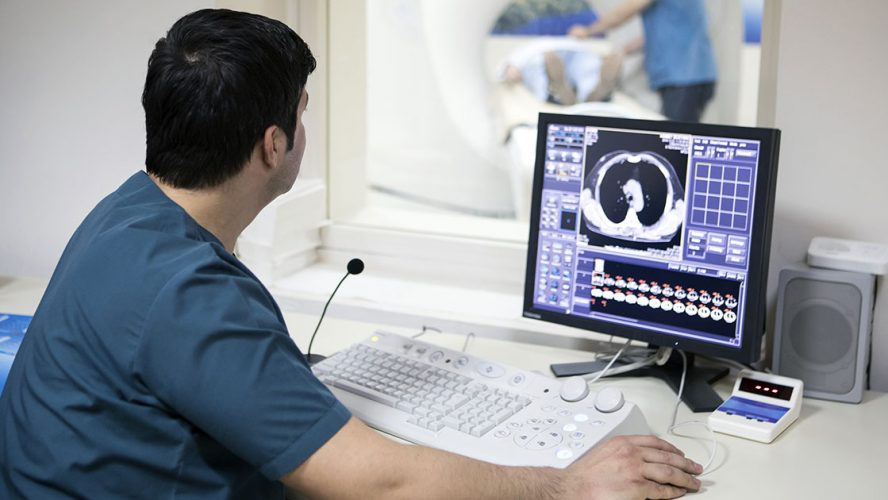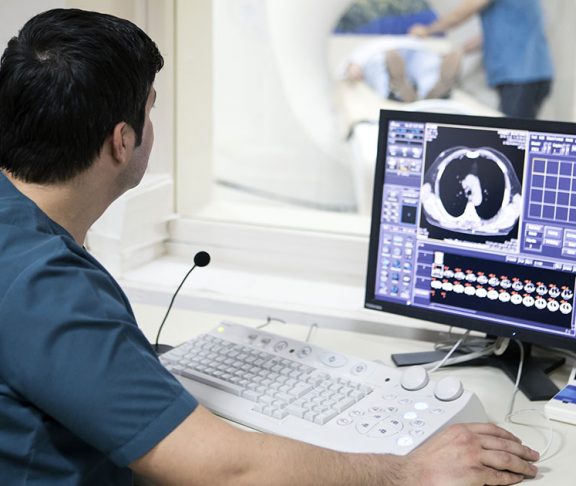Positron Emission Tomography (PET) — the technology used to diagnose coronary artery disease and damage from a heart attack — has been around for over 50 years, but it continues to innovate and improve.
“It is considered the most accurate, non-invasive test available to make a diagnosis,” says Dr. Rob Beanlands, chair of the Division Head of Cardiology and director of the National Cardiac PET Centre at the University of Ottawa Heart Institute.
During the test, which measures blood flow, a radioactive tracer is injected into the patient’s blood, creating gamma energy. A gamma detector tracks signals from the tracer and takes pictures, and a computer then creates a 3D image of the heart.
“It really allows us to determine if their symptoms are being caused by a heart problem related to blood flow or whether they’re at risk for future heart events,” says Dr. Beanlands, who is also the president-elect of the American Society of Nuclear Cardiology, a professional society of over 4,200 cardiovascular imaging professionals.
The technology can help doctors determine if a patient will benefit from certain therapies, including angioplasty and stenting, as well as coronary artery bypass surgery.
Reliable and efficient
The amount of radiation used in the test is small, typically excreted by the kidneys within 24 hours.
“The benefit of the information far outweighs the theoretical risk of low-dose medical radiation,” says Dr. Beanlands, who compares the amount of radiation to what patients get whilst having two or three mammograms.
Easy to use, efficient and ever-improving, PET scans are becoming widely available. An increasing number of centers are adding PET imaging to their service offerings in the United States and other countries. Advances include better precision, and the ability to detect inflammation.
“When you have the technology available, [it’s used more] because the physicians see the power of the information to help the patients,” he says. “Because the test is so reliable and dependable, they refer their patients more.”
In-the-know
Patients should not eat or drink in the four to six hours before the test. They also need to avoid caffeine for 24 hours before the test since it can interfere with the results.
PET scans typically last about 30-45 minutes, and patients can usually resume normal daily activities after the scan is complete. Three blood flow measurements are taken during “rest and stress” periods. First, the patient’s baseline resting blood flow is measured. Next, the technician gives the patient medicine in the IV to speed up blood flow — similar to what it would be during exercise — and stress blood flow is measured. Then, approximately 15 minutes later, the patient’s resting blood flow is measured again.
Results are sent to the patient’s doctor to be discussed at a future appointment. Nice and easy!

